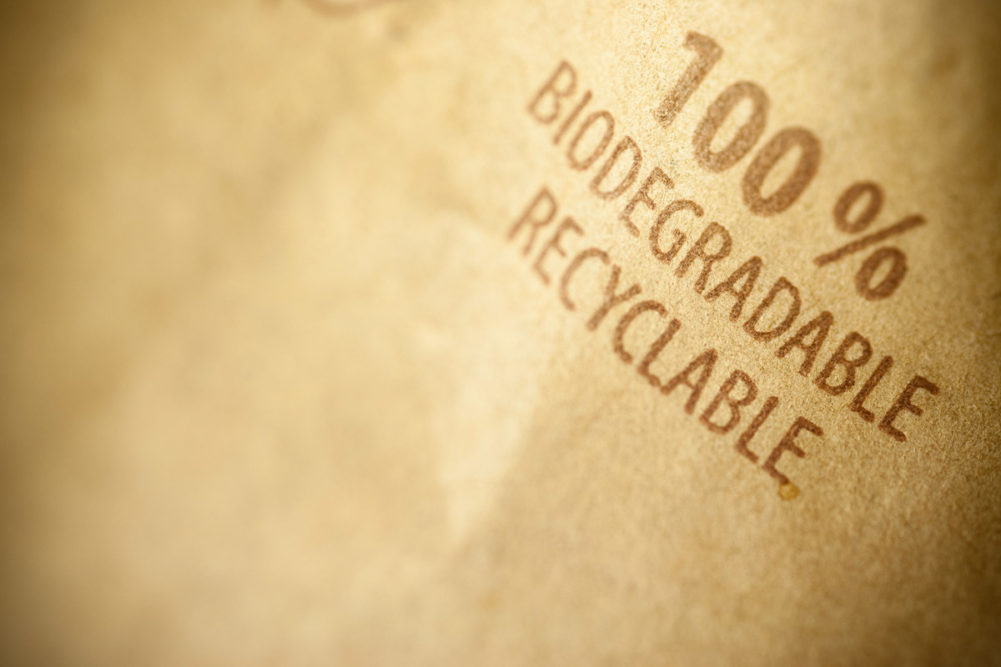NEW YORK — According to the Composting Consortium and Biodegradable Products Institute (BPI), the market for compostable packaging is expected to grow 17% from 2020 to 2027. As demand grows for a more circular packaging landscape, misconception and confusion have emerged as key barriers for consumers and brands as they seek to do their part.
How can the industry create a national consensus around compostable packaging? A recent joint study by the Composting Consortium — which is managed by Closed Loop Partners’ Center for the Circular Economy — and BPI sought to answer this question and determined three main challenges and opportunities: effective design and labeling strategies, consumer education, and policy alignment between local and state governments.
Compostable vs biodegradable
According to the study, nearly half (49%) of consumers admit they don’t fully understand the difference between “compostable” and “biodegradable,” which can lead to improper disposal. Nearly 30% of survey respondents in the United States said they would place a compostable packaging item in the recycling bin after use. The practice of “wish-cycling” is a key challenge in both composting and recycling; when the wrong materials are placed in the wrong bin, it creates contamination issues and results in that material losing its value downstream.
According to the Composting Consortium and BPI, “all certified compostable materials are inherently biodegradable in a composting environment, but not all biodegradable materials are safely compostable.” Certified compostable packaging materials exist as a subset under the biodegradable umbrella, and because they are designed to break down under specific conditions, they are held to different regulatory standards.
“In the absence of the required conditions such as temperature, moisture and microbial presence, biodegradable material may endure in the environment for extended periods, or worse, break down into smaller microplastics without undergoing genuine biodegradation,” according to the report.
This confusion has already led several states — California, Colorado, Maryland, Minnesota and Washington — to ban the term “biodegradable” on plastic products.
“Made from plants” is another way some brands are choosing to call out compostability, and up to half (50%) of consumers say they recognize this messaging as something that can be placed in a composting bin. However, the Composting Consortium and BPI describe these packages as “look-alike items” that actually account for a significant slice of the contamination problem.
According to the study, 52% of consumers say they typically place compostable packaging in a compost bin for curbside pickup, while 44% place them in their at-home compost system, and 39% drop them off at a local composting facility. Roughly 28% place compostable items in the recycling bin, and 5% place them “anywhere outside,” both of which cause contamination or pollution.
However, only 13% of respondents said they have access to curbside collection of compostable items, making accessibility to the proper waste streams a barrier for this circular packaging category. According to the report, placing compostable items in the trash is actually the right approach when consumers don’t have access to industrial composting facilities in their area.
Simplification and standardization
Consumer education is required to teach people what to do with compostable packaging. For example, the report found that even consumers in the Western United States — where curbside compost services are twice as likely — misunderstand how to dispose of compostable packaging correctly. Furthermore, there is a wide spread of beliefs among consumers about what “compostable” actually means for end-of-life disposal.
According to the report, there is also a need for the simplification and standardization of terms and designs used to convey a package’s compostability. Using clear design elements and prominent callouts is key here. Additionally, in their comparison of various compostable labeling and design approaches, the Composting Consortium and BPI determined packages that contained two to three design elements to indicate compostability, such as text size and coloring, were best understood by consumers.
Finally, aligning local and state policies and processes could go a long way in ensuring compostable packaging ends up where it should.
Download the full report from the Composting Consortium and BPI here.
Read more about packaging solutions and trends for pet food and treats.



